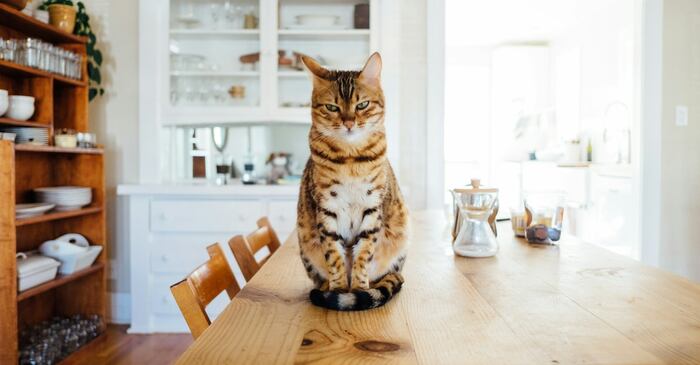
Maintaining a clean and sanitary litter box is essential for your cat’s health. It’s also important for creating a hygienic environment in your home. Regular cleaning and sanitizing help prevent the buildup of odors, bacteria, and parasites that can pose health risks to both you and your cat. Proper cleaning techniques also help extend the lifespan of the litter box and ensure that your cat continues to use it consistently. Here is a step-by-step process for effectively cleaning and sanitizing your cat’s litter box to keep it fresh, clean, and safe for your furry friend.
Gather Cleaning Supplies
Before starting the cleaning process, gather all the necessary supplies to ensure a thorough and efficient job. You will need a sturdy scoop designed for clumping litter, a trash bag for disposing of waste, unscented soap or mild detergent, a scrub brush or sponge, and hot water. It’s important to use unscented soap to avoid leaving any residual fragrance that may deter your cat from using the litter box. Additionally, consider using disposable gloves to protect your hands from contact with waste and cleaning solutions. Having all the supplies on hand will streamline the cleaning process and ensure that you have everything you need to properly sanitize the litter box.
Daily Scooping Routine
To keep your cat’s litter box clean and odor-free, it is important to scoop it daily using a sturdy scoop made for clumping litter. Make sure to clean the large cat litter box daily by removing solid waste and clumps of urine.
Seal the waste in a trash bag and dispose of it in an outdoor trash bin to prevent lingering odors in your home. Furthermore, it is important to regularly inspect the litter box for any indications of soiling or unpleasant smells and promptly address them. This proactive approach prevents odor buildup and ensures that your cat has a clean and comfortable space for their bathroom needs.
Weekly Deep Cleaning
To maintain a clean litter box, it is recommended to perform a thorough cleaning once a week, in addition to daily scooping. To start, transfer all the contents of the litter box into a trash bag and discard it in an outdoor trash bin.
Proceed by using hot water and a mild, unscented soap or detergent to scrub the litter box meticulously, with particular attention to the corners and crevices where waste tends to accumulate. Employing a scrub brush or sponge can effectively eliminate stubborn residue and bacteria. Afterward, rinse the litter box thoroughly with hot water to ensure all soap residue is removed, and allow it to completely air dry before adding fresh litter.
Sanitizing the Litter Box
After cleaning the litter box with soap and water, it’s important to sanitize it to kill any remaining bacteria and eliminate odors. One effective method for sanitizing the litter box is to use a diluted bleach solution. Mix one part bleach with nine parts water in a bucket or spray bottle. Use gloves to protect your hands and a sponge or cloth to apply the bleach solution to the inside of the litter box. Allow the solution to sit for at least five minutes to ensure thorough sanitization, then rinse the litter box thoroughly with hot water. Be sure to allow the litter box to air dry completely before adding fresh litter to prevent any residual bleach odor.
Preventative Measures
In addition to regular cleaning and sanitizing, there are several preventative measures you can take to maintain a clean and hygienic litter box environment for your cat. Consider using a high-quality clumping litter that forms solid clumps for easy removal of waste. Some litters also contain antimicrobial agents that help inhibit the growth of bacteria and control odors. Placing a litter box liner or mat under the litter box can help contain litter scatter and make cleaning easier. It’s also important to replace the litter box periodically to prevent the accumulation of scratches and cracks where bacteria can hide. By implementing these preventative measures, you can reduce the frequency of deep cleaning and ensure a consistently clean and sanitary litter box environment for your cat.
Regular cleaning and sanitizing of your cat’s litter box are essential for maintaining a healthy and hygienic environment for both you and your feline friend. By following a comprehensive cleaning routine that includes daily scooping, weekly deep cleaning, and regular sanitization, you can ensure that your cat has a clean and comfortable space to do their business. Gathering the necessary supplies, including a sturdy scoop, unscented soap, and bleach solution, will streamline the cleaning process and ensure thorough sanitization. Additionally, implementing preventative measures such as using high-quality litter and litter box liners can help maintain cleanliness between cleanings. With proper care and attention, you can ensure that your cat’s litter box remains fresh, clean, and odor-free, promoting their health and well-being.
Leave a Reply